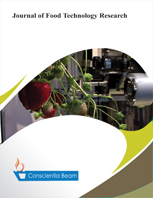Assessment of residue levels and health risk of carbofuran, chlorpyriphos, abamectin, imidacloprid, and pretilachlor in locally available fruits in Dhaka, Bangladesh
DOI:
https://doi.org/10.18488/jftr.v11i4.4013Abstract
The study addresses pesticide contamination in local fruits as a critical food safety and public health issue. Although pesticides are essential in farming, high fruit residue levels are significant risks to consumer health. This study aims to evaluate pesticide residues in various fruit samples and assess their compliance with safety standards. A total of 15 different fruit samples were collected from the temporary floating market in Dhaka for residue analysis by standard(pesticide) in HPLC. This analysis focused on measuring the concentrations of prominent pesticides in the fruit samples, including carbofuran, chlorpyriphos, abamectin, imidacloprid, and pretilachlor, and followed Codex Alimentarius and Bangladesh Food and Drugs Authority guidelines. The findings revealed significant pesticide residues in various fruits. Oranges contained 20% carbofuran, chlorpyrifos, and abamectin, exceeding allowable limits. Apples showed 60% carbofuran and 40% chlorpyrifos concentrations, exceeding the maximum permissible residue limits (MRLs) set by Codex Alimentarius. Grapes were also found to contain significant levels of carbofuran, posing potential health risks, although the chlorpyrifos residues in black grapes were within permitted thresholds. However, most fruit samples exceeded the limits set by the Bangladesh Food and Drugs Authority. Furthermore, the Estimated Average Daily Intake (EADIs) for all fruits exceeded the recommended limits established by the World Health Organization (WHO) and the Food and Agriculture Organization (FAO). While few fruit samples meet standards, results show that some exceed allowable MRLs and call for stronger regulations, better monitoring in the market, and cooperation among policymakers, producers, and health regulating agencies to balance safety, health, and sustainable farming.

